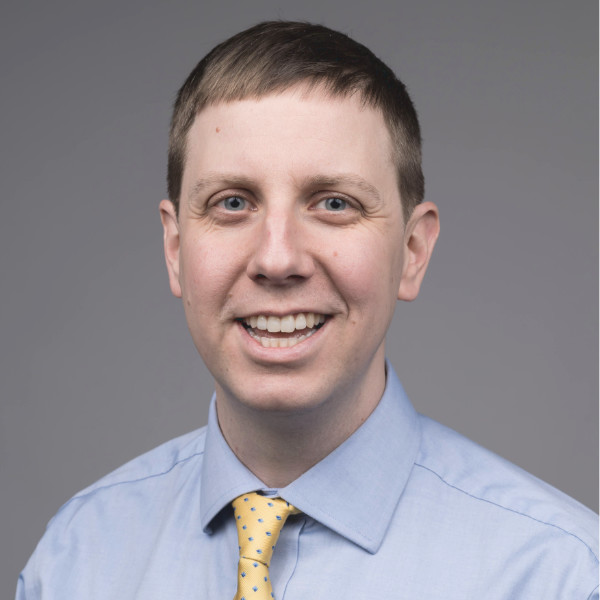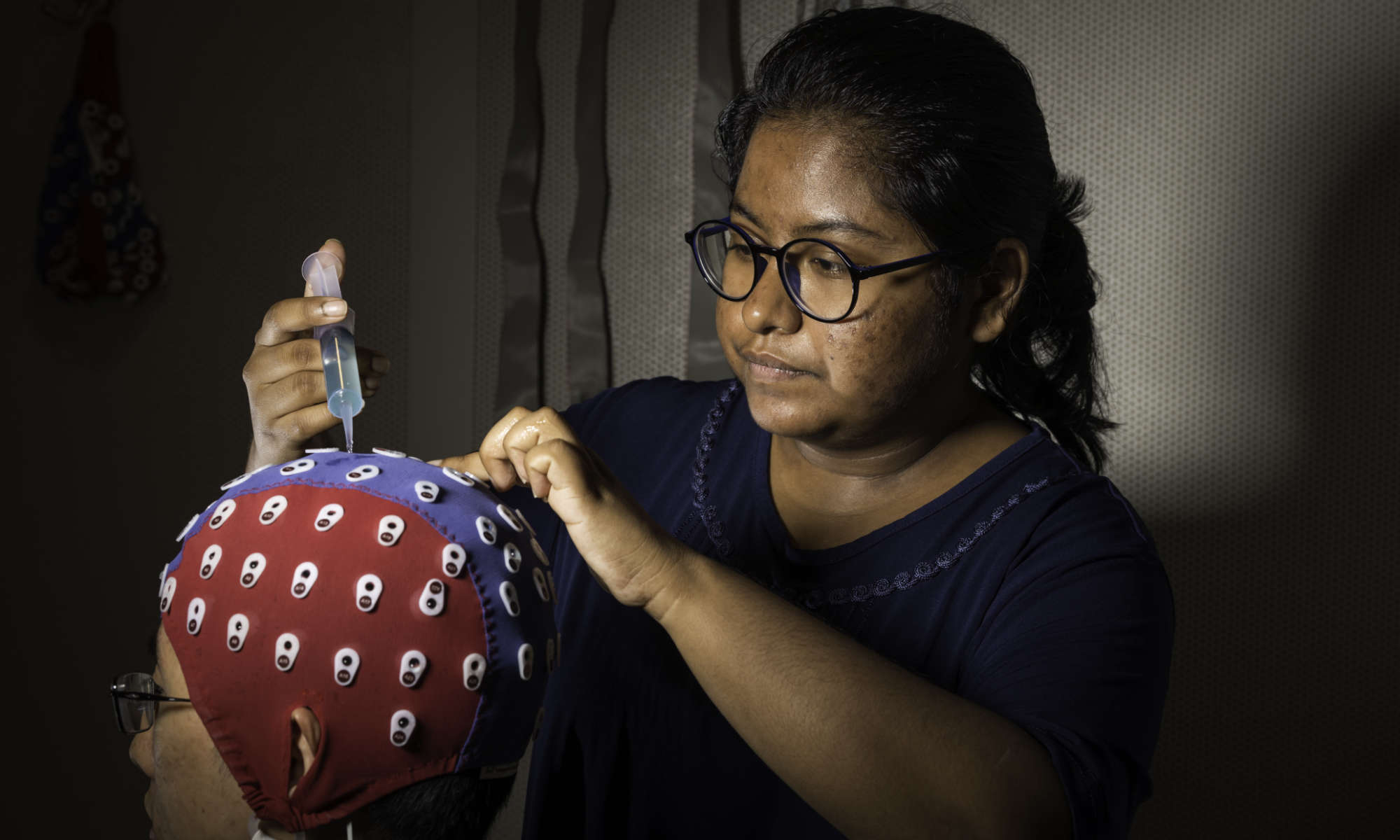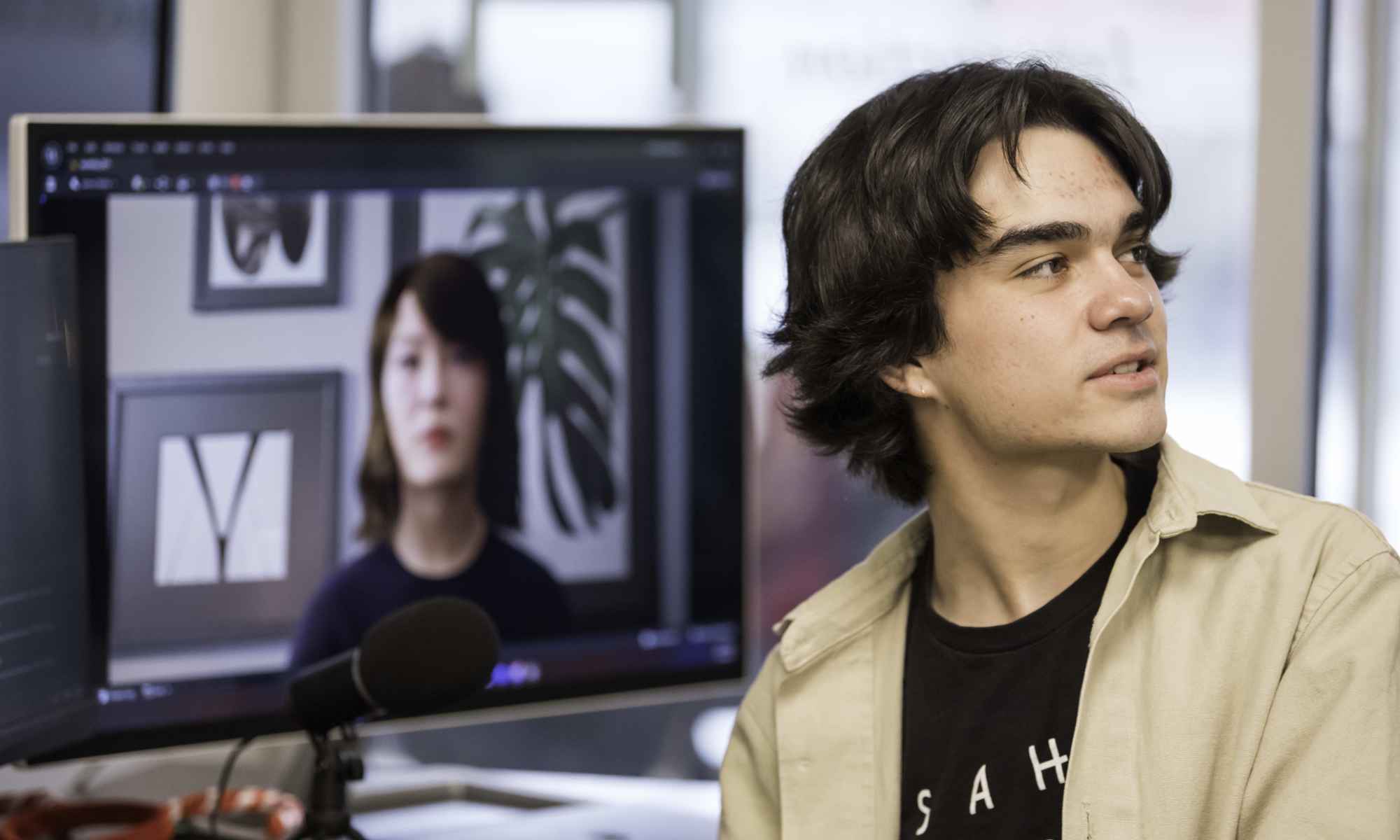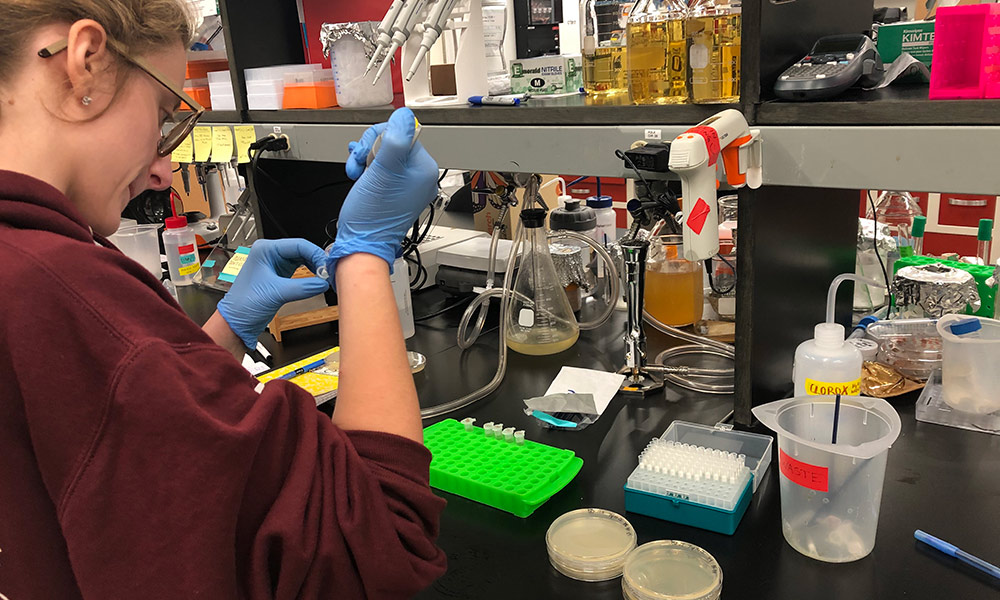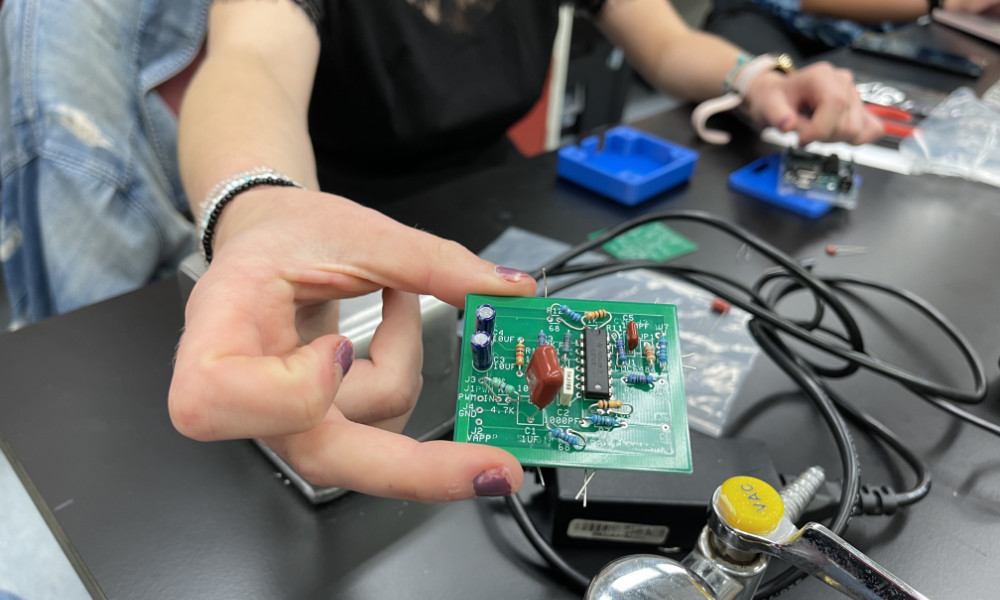A biomedical engineering student explores how the brain processes speech syntax—and discovers the benefits of conducting research as an undergraduate.
In a laboratory at the University of Rochester’s Center for Advanced Brain Imaging & Neurophysiology, Sophea Urbi Biswas ’24 pores over brain wave signals recorded from a person listening to an audiobook next door. Biswas, a senior biomedical engineering student from Bangladesh, is attempting to see if the syntactic features of the words and phrases the participant listens to are reflected in the waves picked up by the electroencephalography (EEG) cap they wear.
Finding such correlations is no small feat considering every blink, yawn, and head movement by the participant—not to mention all the electronic devices in the room—add noise to the experiment, making Biswas’s job harder. But she seems to relish the opportunity to apply her coding skills in a real-life setting.
“We take all these classes where they teach you the fundamentals of coding and how to use coding languages. But until now, I haven’t gotten to apply it to real data taken from real people,” says Biswas. “It’s exciting pursuing questions that have never been asked before and getting results that have never been found before. This project shows how powerful coding can be.”
Biswas earned a Schwartz Discover Grant that allowed her to spend the summer in an immersive, full-time research experience to enhance her competitiveness for future fellowships and other advanced research opportunities. After taking a class on biosystems and circuits taught by Edmund Lalor, an associate professor in the Department of Biomedical Engineering and Department of Neuroscience, they had a conversation about the research he conducts and the projects his lab was planning, and he invited her to join his research team.
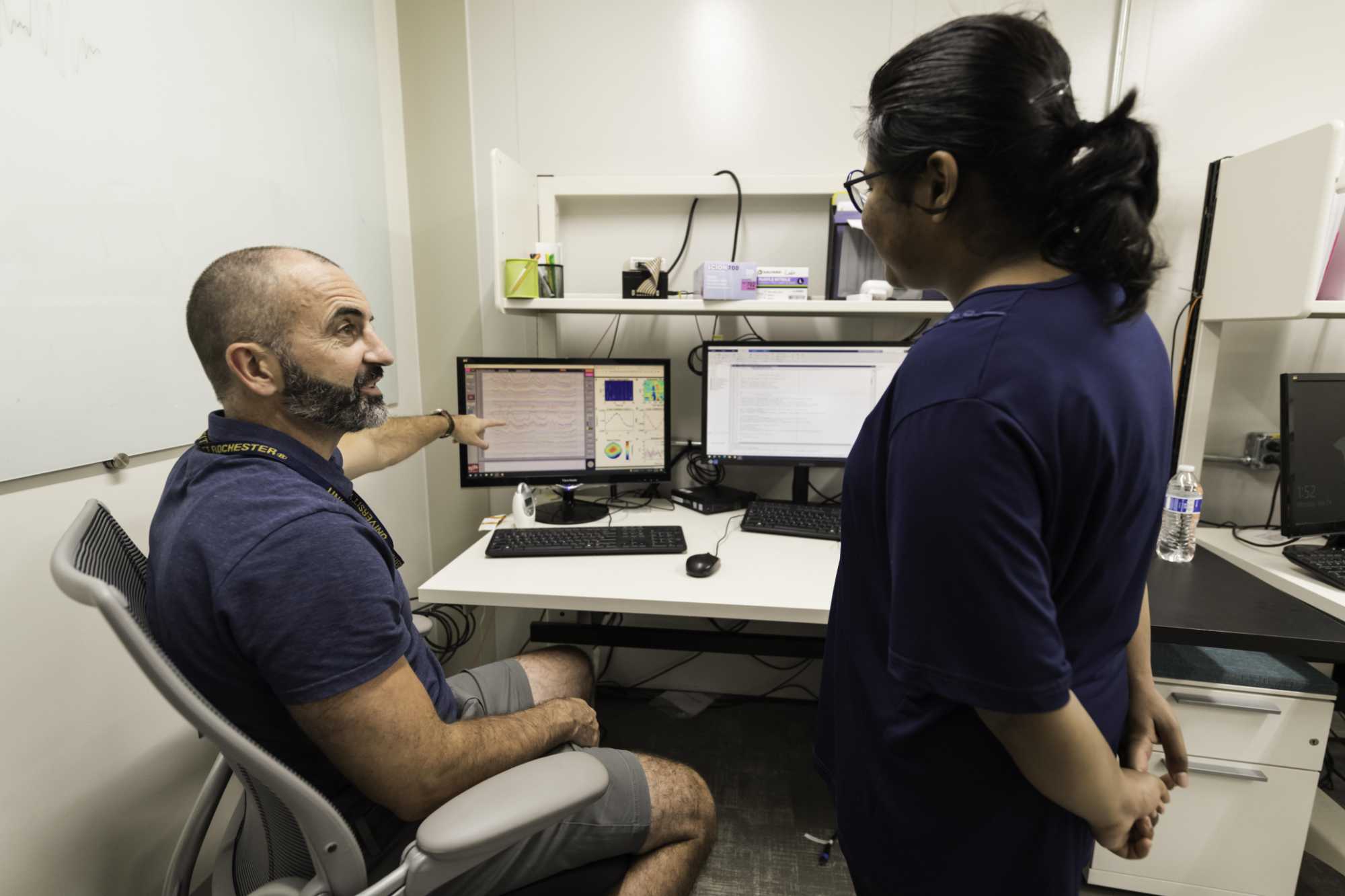
Lalor and his team of research technicians, postdoctoral researchers, and students study how humans perceive and understand the world around them. For a while, they’ve been curious to see if there is evidence that EEG readings reflect the syntactic rules of language, and thought this would be a great opportunity for an undergraduate student to delve into.
“I think the teams feels a lot of excitement taking on junior students who want to learn more,” says Lalor. “I like to provide undergraduate students the opportunity to experience research. It’s hard work, there are a lot of ups and downs and disappointing days, but it’s very gratifying when they get interested in it. And we’re helping to propel the next crop of graduate students, postdocs, and ultimately professors forward.”
For Biswas, the opportunity to work in the lab has been invaluable as she eyes different graduate school paths. She credits Lalor and Ole Bialas, a postdoctoral fellow of biomedical engineering, for helping her build her research skills in a positive environment.
“I think one of my biggest takeaways from this summer has been the mentorship I’ve received,” says Biswas. “Research doesn’t come with a book and it’s kind of hard to navigate at first. I came up with a million questions and they’re always accommodating, wouldn’t dismiss any questions, and would point me in the right direction. It’s very encouraging and has helped a lot.”

